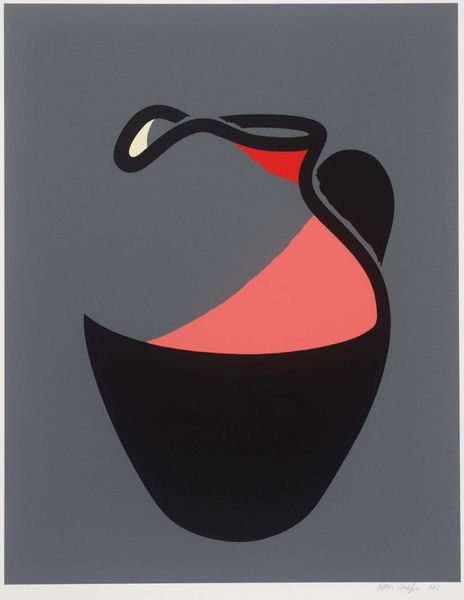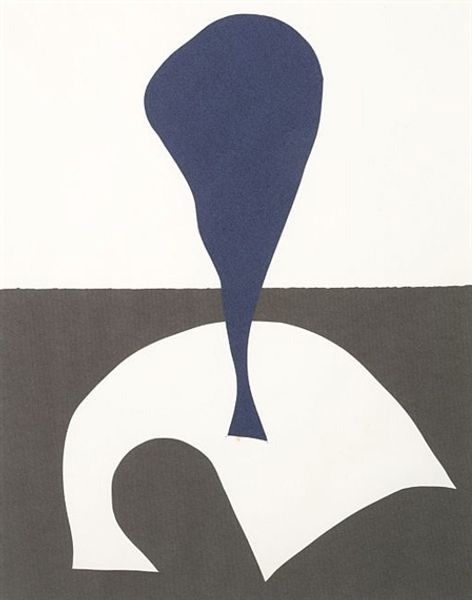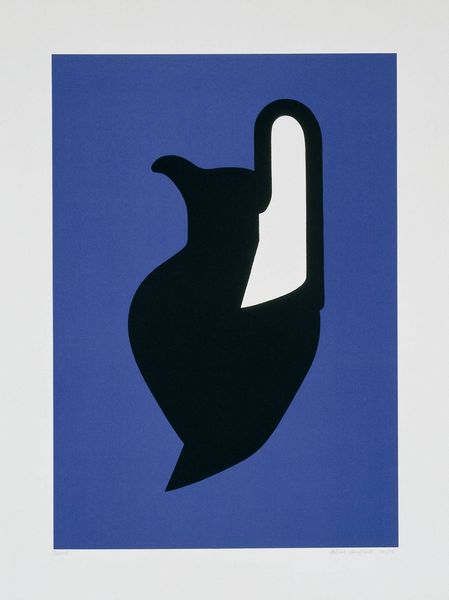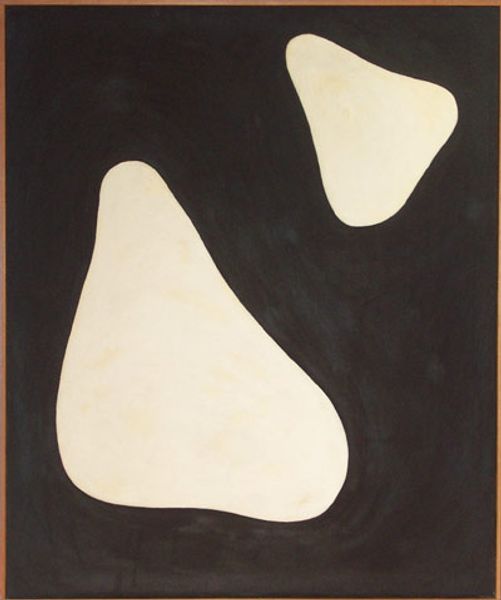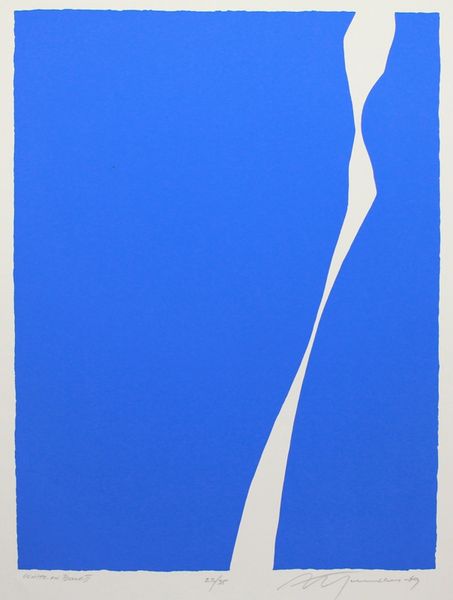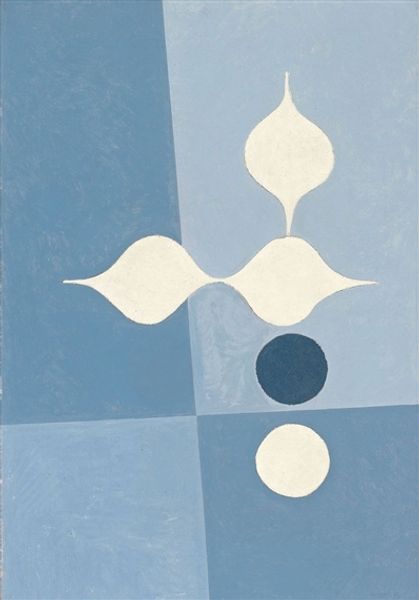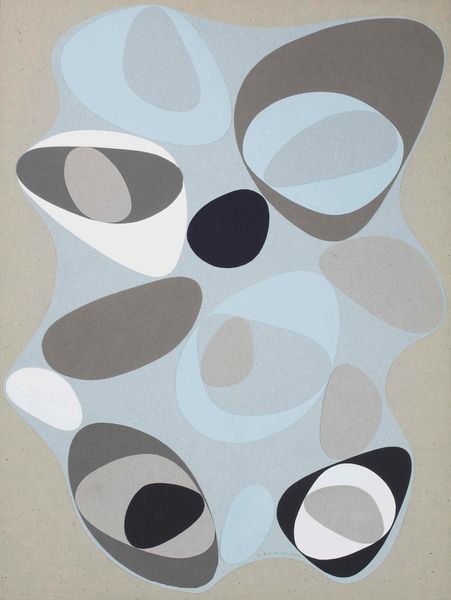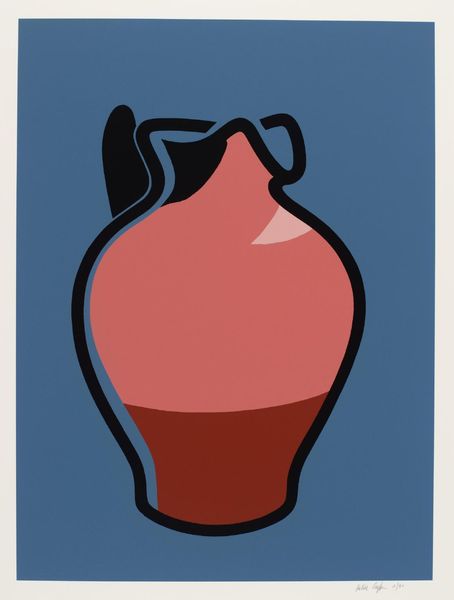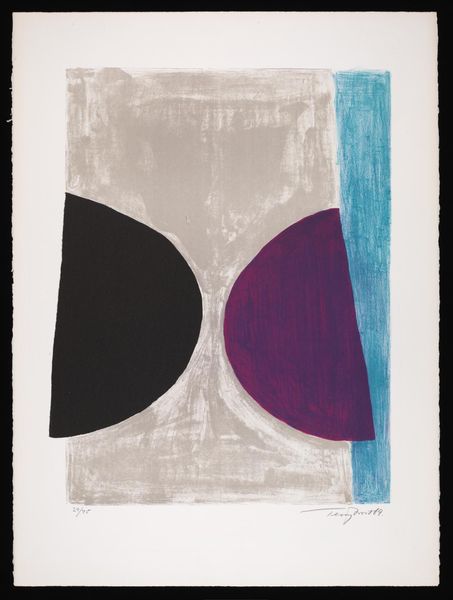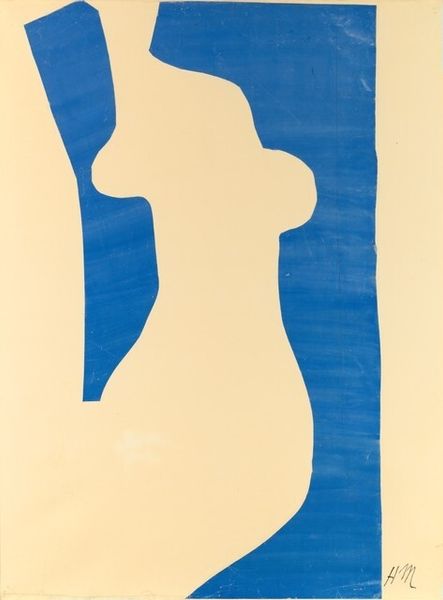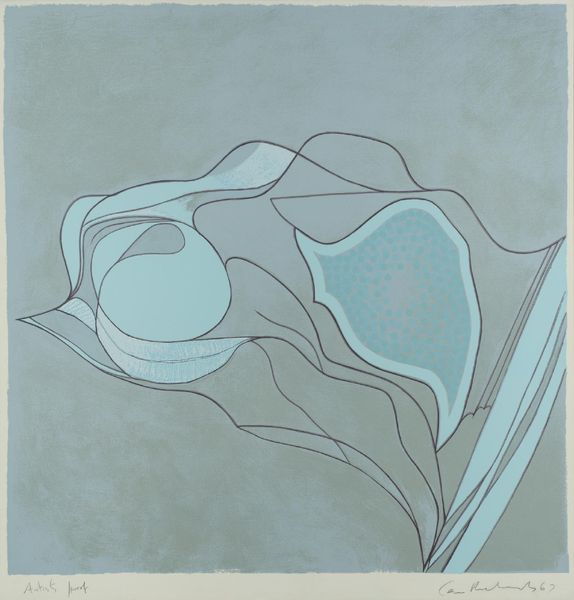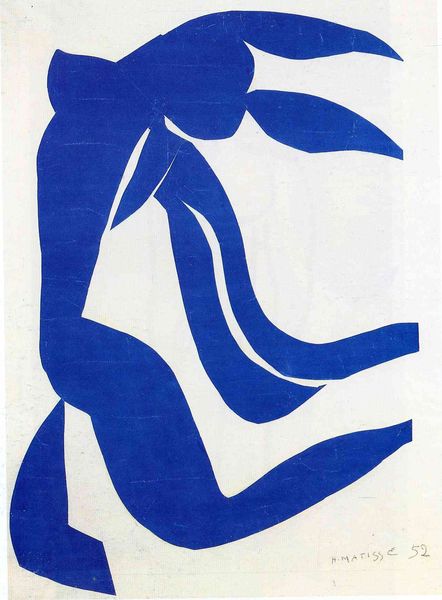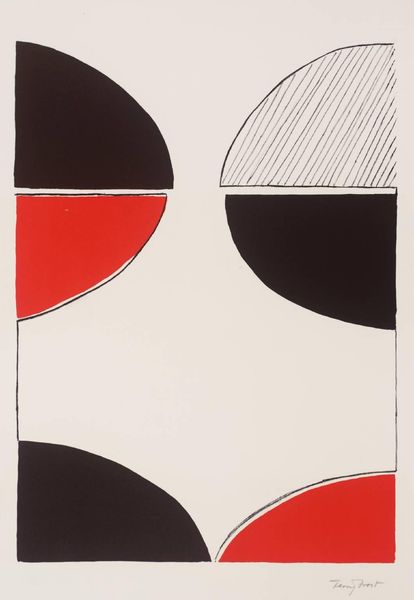
Dimensions: image: 794 x 571 mm
Copyright: © The estate of Patrick Caulfield. All Rights Reserved, DACS 2014 | CC-BY-NC-ND 4.0 DEED, Photo: Tate
Curator: Patrick Caulfield's "Water Jug" employs a striking visual economy. The reduction of form to simple lines and flat color planes is quite compelling. Editor: I agree, it's visually magnetic. The interplay between the dark, heavy base and the delicate, almost playful lines defining the jug's outline creates an intriguing tension. How might the cultural context influence this portrayal? Curator: Caulfield emerged in the Pop Art scene, which was reacting against Abstract Expressionism. "Water Jug" echoes this shift, taking an everyday object and presenting it with clean, bold design, rejecting the gestural brushwork of the prior generation. Editor: Precisely! This reflects a broader trend in British art, where artists used imagery of everyday life to challenge conventional artistic values and engage with a wider audience. It is a celebration of the mundane, elevated to high art. Curator: Indeed, and considering the image's flatness, and the relationship between figure and ground, it is the formal construction that ultimately dictates meaning. Editor: Absolutely, the simplicity belies a profound engagement with the visual language of its time. Thank you.
Comments
Join the conversation
Join millions of artists and users on Artera today and experience the ultimate creative platform.
tate 7 months ago
⋮
Caulfield's simplified, deliberately cartoon-like style makes no claims to a 'realistic' depiction of objects. Instead, through his work, Caulfied invites us to consider the nature of representation. The 'Jugs' have been radically reduced to a simple black outline, with planes of colour to represent light and shading, and yet they remain distinctly recognisable. Gallery label, August 2004
